Keshikchidagh: The archaeological code of an ancient civilisation A historical overview by Caliber.Az
The land of Azerbaijan is a cradle of ancient culture, rich in archaeological and historical monuments that preserve the traces of many eras. Across the country, one can find ancient settlements, burial mounds, fortresses, temples, and other remnants that bear witness to its centuries-old past.
A special place among these regions is held by the Aghstafa District — one of the oldest and most strategically important corners of Azerbaijan. Here, cultural landmarks are visible at every turn: from tombstones to temples and defensive structures. Many areas of the district remain shrouded in mystery, still waiting to be fully explored, holding traces of the lives and beliefs of our ancestors. One such unique and yet insufficiently studied site, reflecting some of the most ancient chapters of history, is the temple-archaeological zone of Keshikchidagh.
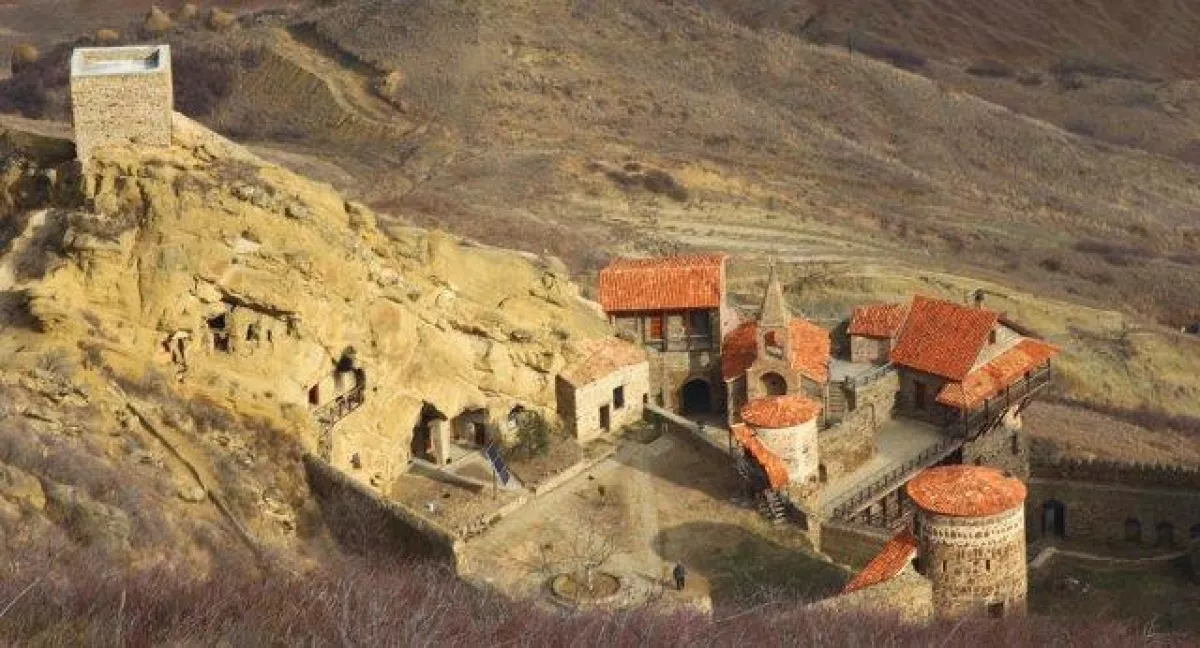
The Keshikchidagh Cave-Temple Complex is one of the most distinctive and awe-inspiring sites in Azerbaijan, remarkable for its scale and atmosphere of deep antiquity. Located 75 kilometres from the centre of Aghstafa District and 28 kilometres north of the village of Boyuk Kesik, the complex stretches for 25 kilometres along the state border. It covers a vast area of Jeyranchol — one of the most picturesque and least disturbed corners of the country, nestled on the Gatar-Dagh Ridge at an altitude of 750–950 metres above sea level.
This area preserves traces from every stage of historical development — from the Palaeolithic period to the late Middle Ages. Archaeological sites are found both individually and in clusters, forming a culturally rich and monument-dense landscape.
Keshikchidagh is a living encyclopedia of the past, where history is literally carved into stone. Since 2011, excavations have been carried out in various parts of the reserve, including Jeyranchukhur, Jandargol, Sariyokhush, Sarisoy, Galtinderesi, Karasoy, Karvanderesi, and others. These studies have uncovered dozens of burial mounds dating back to the Late Bronze Age and Early Iron Age, along with rare and significant artefacts.
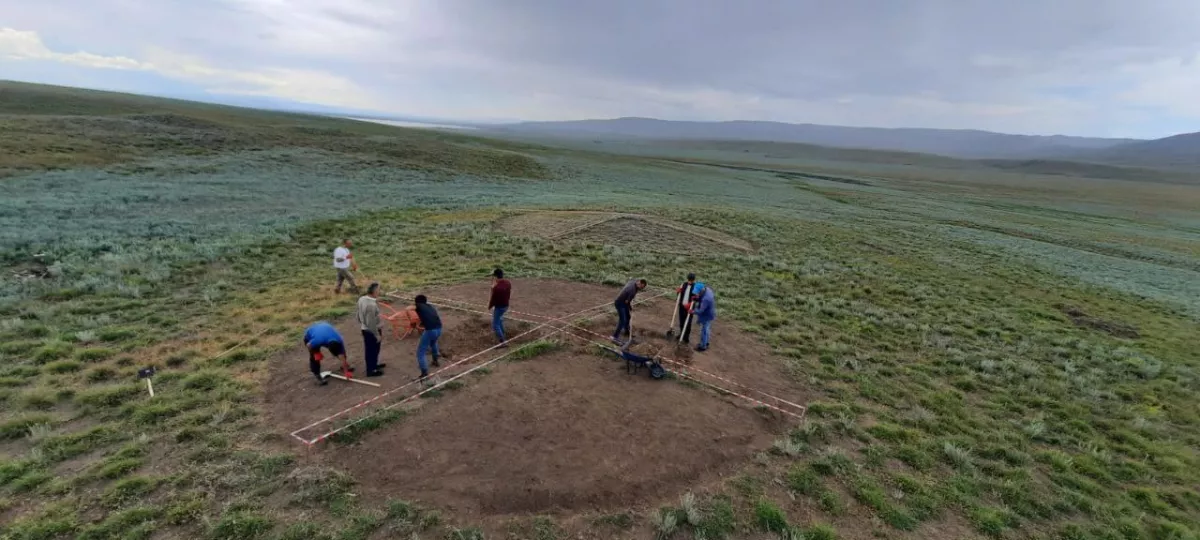
The burial mounds in the western part of the Jeyranchol plain, particularly within the reserve area, exhibit unique local features in their structure, the design of burial chambers, rituals, and typology of artefacts. These characteristics allow the mounds to be dated to the Late Bronze Age and Early Iron Age. Notably, the population associated with the Khojaly-Gadabay culture widely practised mound burials, reflecting significant aspects of their cultural and religious traditions.
During the construction of a road from the village of Soyugbulag to the territory of the Keshikchidagh State Historical and Cultural Reserve, structures presumed to be historical monuments were discovered, leading to a temporary suspension of the construction works.
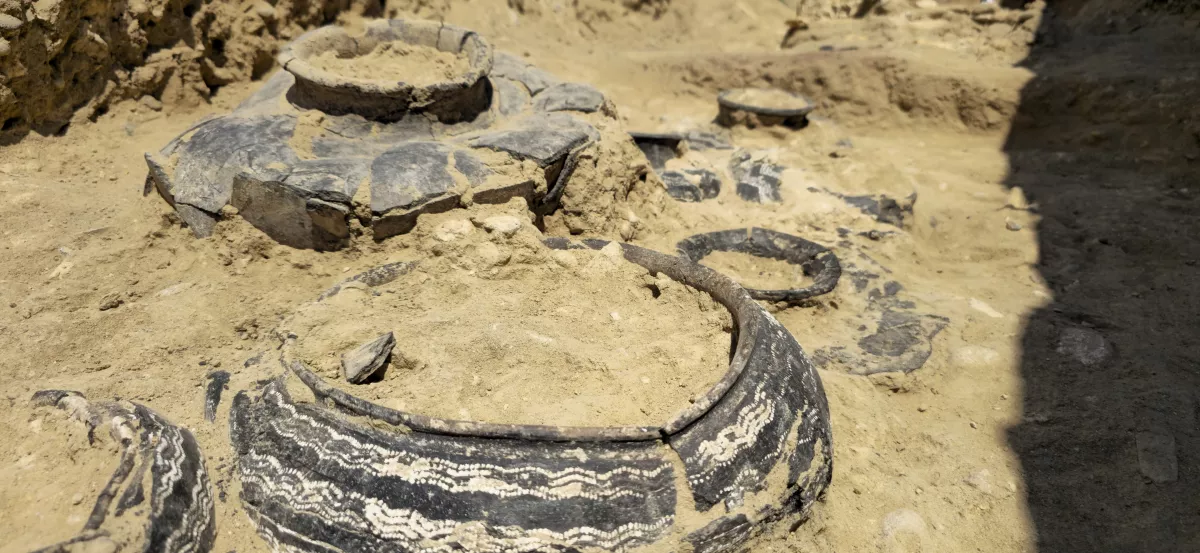
At the initiative of the State Service for the Protection, Development, and Restoration of Cultural Heritage under the Ministry of Culture of Azerbaijan, Dr Parviz Gasimov, a candidate of historical sciences from the Institute of Archaeology and Ethnography of the National Academy of Sciences of Azerbaijan (ANAS), was dispatched to the reserve. With the support of the reserve administration, reconnaissance and rescue excavations led to the discovery of around 20 artefacts, including pottery fragments, arrowheads, a dagger, and jewellery.
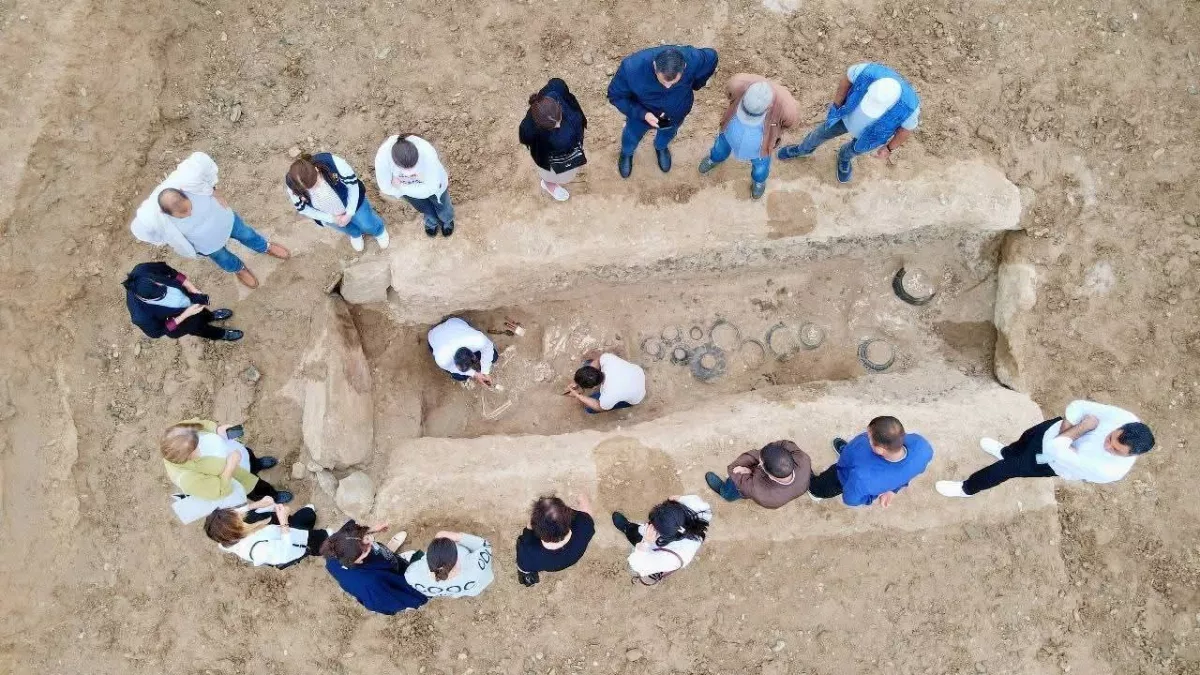
A long-term project aimed at the comprehensive study of Bronze Age culture in the region has been underway for over five years. It has become one of the first systematic archaeological summer schools in the country and has grown into a lasting tradition, enriching Azerbaijani archaeology with unique findings. Around 2,000 participants have taken part in the excavations since the project’s inception, significantly boosting interest in the subject both among scholars and the general public.
In 2024, the next phase of the project, titled “Scientific Archaeological Excavations and Summer School in Keshikchidagh,” was launched.
That same year, archaeologists working in the field discovered a new and important excavation site — the Yovshanlidere Valley. This mountain valley, flanked by massive slopes and gentle hills, is 600–800 metres wide and stretches over 5–6 kilometres. The area is dotted with burial mounds: around 40 burials have been registered, laid out in three parallel rows.
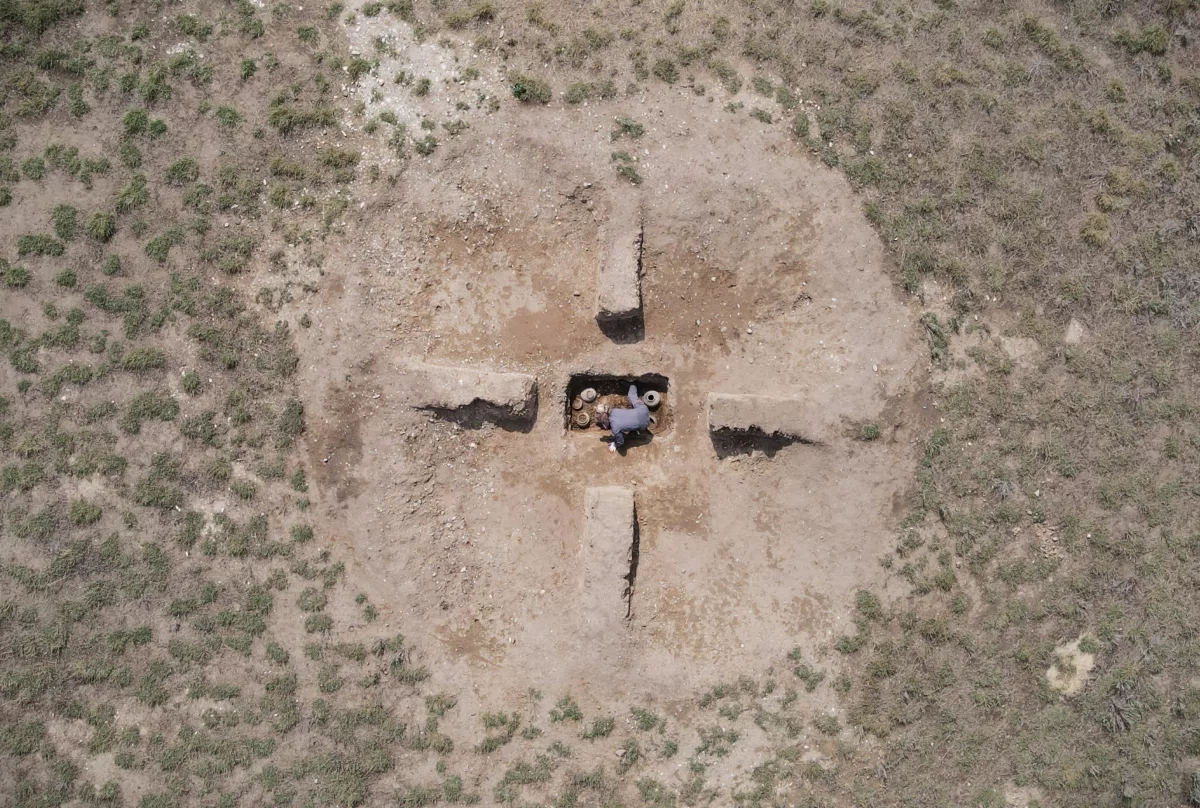
During the excavations, several burial mounds (Nos. 1, 2, 3, 5, and 6) were investigated, with Mounds No. 3 and No. 4 drawing particular interest due to their unique materials and valuable insights into the burial traditions of the region’s ancient inhabitants:
— Mound No. 3: Diameter – 10 metres, height – 0.9 metres. This is a rare earthen mound — the first of its kind discovered in the area. Beneath the mound, at a depth of 1 metre, a burial chamber (1.9 × 1.1 m) was uncovered, containing a human skeleton and numerous pottery vessels.
— Mound No. 4: Diameter – 18 metres, height – 1 metre, with a capstone made of river stones. Five spearheads were discovered within. The chamber, measuring 2 × 1.1 metres, housed a skeleton and a collection of ceramics.
The burial mounds of the Yovshanlidere Valley are directly linked to the Sariyokhush mounds and demonstrate a clear chronological continuity of the Bronze Age. Mounds Nos. 1, 2, 3, 5, and 6 belong to the Khojaly-Gadabay culture of the 12th–10th centuries BC, while Mound No. 4 dates to a transitional period — the Early Iron Age (8th–7th centuries BC).
Excavations continued in 2025 and yielded stunning results. Mound No. 7, dating to the Middle Bronze Age, was investigated, and within it, archaeologists discovered rare artefacts of significant scientific and historical value.
This find not only enriched the overall understanding of the burial mound culture in the region but also opened new avenues for studying the Middle Bronze Age on the territory of Keshikchidagh.
The excavation of Mound No. 7 turned out to be a true archaeological sensation. Researchers determined that a noble warrior or military leader had been buried here, as indicated by both the features of the mound and the rich artefacts found within. The mound, measuring 28 metres in diameter, contained a burial structure 6 metres long, 2 metres wide, and 3 metres deep. It was divided into three separate chambers: the first was designated for the body of the deceased and his equipment; the second for clay vessels; and the third was left empty. Scholars believe this empty chamber symbolises beliefs about the afterlife — a space where the soul of the deceased could nourish itself and find eternal peace.
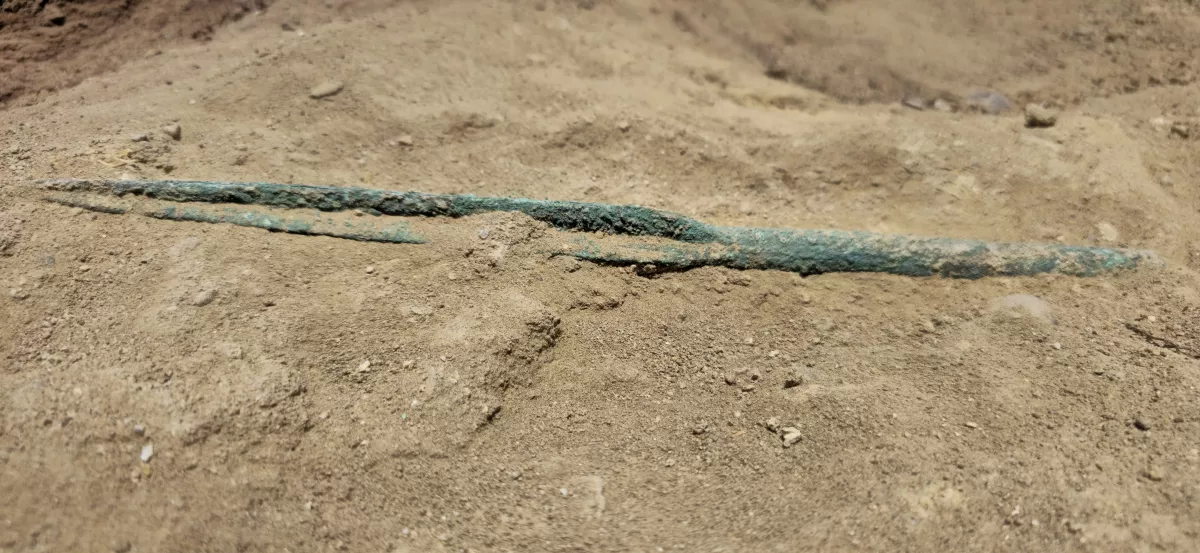
Among the discoveries were a bronze quadrangular spearhead (found in the skeleton’s hand), a bronze anklet, beads, obsidian tools, and 12 inlaid ceramic vessels adorned with white enamel. Inside the vessels, bones of cooked animals — goat, cow, horse, and wild boar — were found, evidently as part of a ritual "feast for the afterlife."
Above the burial, beneath a 0.5-metre layer of soil, 14 massive stone slabs weighing approximately one tonne each (measuring 2 × 0.6 metres) were laid opposite one another. At the top of the mound stood a stone statue in the shape of a bull. A circular limestone seal discovered within the mound points to the presence of early administrative structures and concepts of property.
The expedition was led by Associate Professor Shamil Najafov, PhD in History and Senior Research Fellow at the Institute of Archaeology and Anthropology of ANAS. These findings offer valuable evidence shedding light on the burial rites of the Middle Bronze Age. They help reconstruct the beliefs of the ancient population regarding death, the afterlife, and ritual traditions of that period.
It is also worth noting that as a result of the extensive and meticulous research conducted under the project, the term “Keshikchidagh Kurgans” was introduced into academic circulation — one of the project's major achievements. This term now refers not only to a geographically specific archaeological phenomenon, but also to a unique cultural stratum that reflects the funerary traditions, material culture, and worldview of the region’s ancient inhabitants.
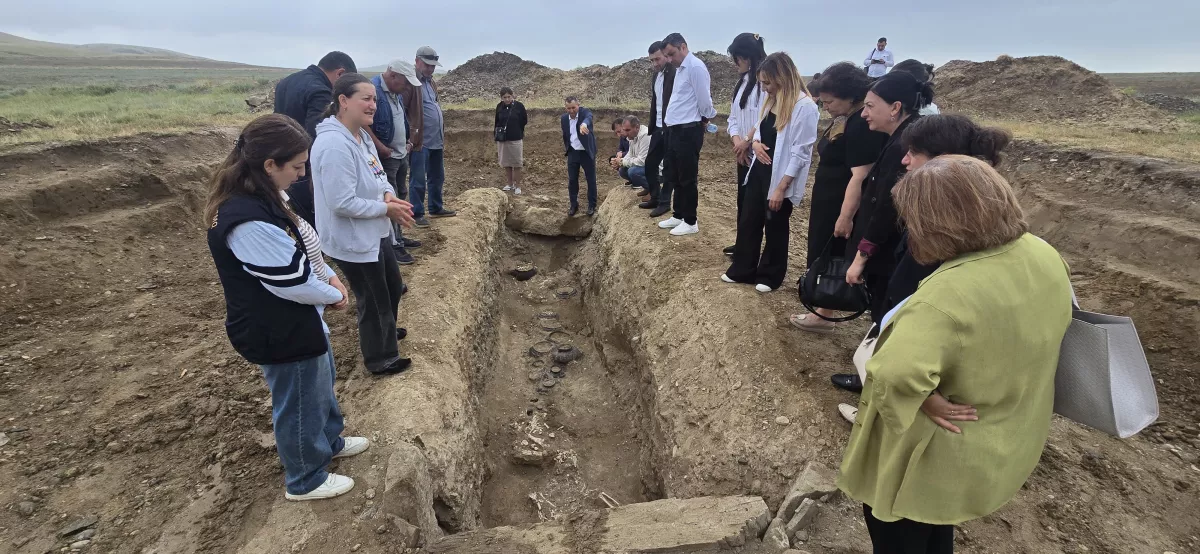
The discovery of Middle Bronze Age burial mounds containing rare artefacts has sparked widespread interest not only among Azerbaijani scholars but also within international academic circles. In the near future, comprehensive interdisciplinary studies are planned, involving leading international laboratories. These will include radiocarbon and isotope analyses, as well as the detailed study of the material composition of the finds. The results will be published in reputable archaeological and anthropological journals around the world.
In addition, a scientific-theoretical monograph is in the works, which will feature photographs, sketches, and detailed academic commentary on all the unique discoveries made in Keshikchidagh.
These findings are of key importance for a deeper understanding of the cultural and historical heritage of the region, underscoring the uniqueness of the discoveries. The potential of Keshikchidagh remains vast and represents exceptional value both for science and culture. The project continues, opening new horizons for researchers. Ahead lie more expeditions, discoveries, and scientific breakthroughs that will help further unveil the rich past of this remarkable land.
Based on materials provided by Musa Mursaguliyev, Director of the Keshikchidagh State Historical and Cultural Reserve.
By Vahid Shukurov, exclusively for Caliber.Az








